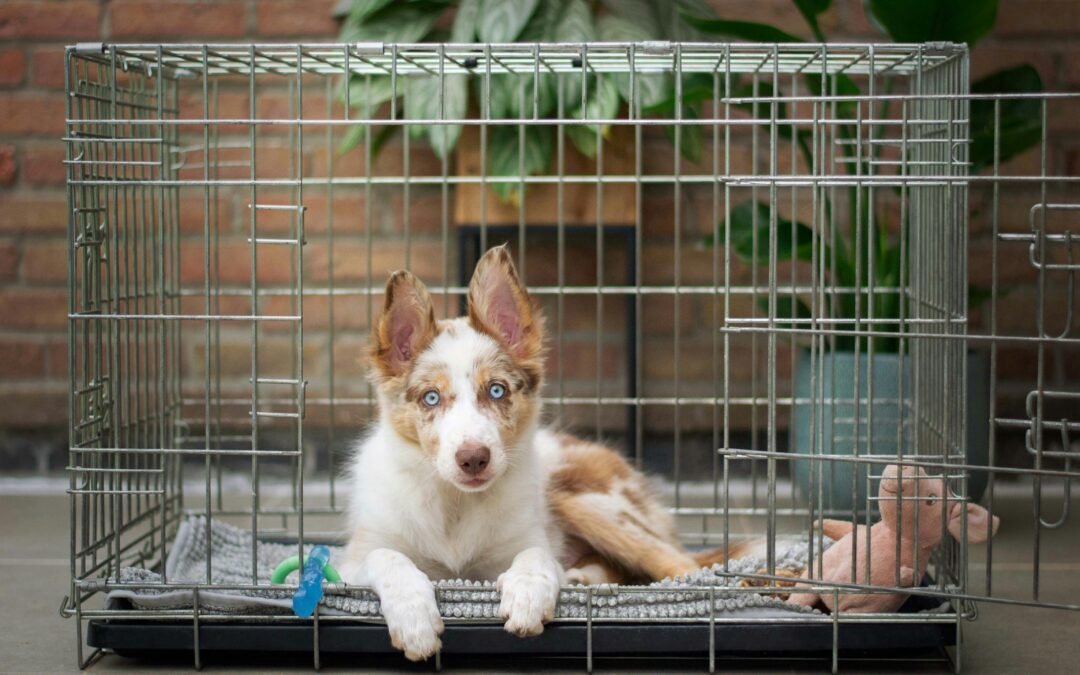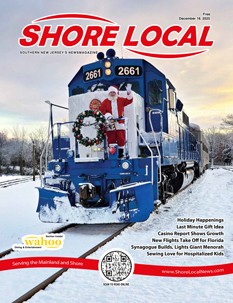I received an email asking for help regarding a four-month-old puppy that struggles to settle when left alone in the crate when the family is home and moving around the house. The puppy barks for attention, then inevitably, someone either feels bad for the puppy or gets tired of hearing the puppy bark and lets them out. Teaching your puppy to be alone and settle themselves is, for me, one of the most valuable skills they can learn. It just takes consistency, patience, and sometimes a bit of tough love.
Creating a positive association with a crate and confinement is the first step in the training. I start crate training all of the puppies I breed at about six weeks or so, when they start eating individual meals. Each puppy eats in their crate with the door closed and is let out after eating to go outside for potty training. I also give them their first marrow bones inside a crate, so they can chew undisturbed by littermates. I make the crate an awesome place for them to be with thick fleece crate pads, put a few toys inside with them, and hang a water bucket inside the crate. I do use playpens for baby puppies, but do not like to solely rely on them when crate training and helping them to learn how to soothe themselves. The time spent in the crate is increased each day as they age. I also find housebreaking to be easier when using an actual crate where the puppy has less space for an accident.
Where most people go wrong in crate training is to only put the puppy in the playpen, which is usually roomier, when they are home. Or, they only put the puppy in the crate at bedtime or when leaving the house. A huge key to success is, for no reason whatsoever, you simply put the puppy in the crate while you are home and shut the door. Just because you are home does not mean that the puppy will have access to you. It is not realistic when raising a puppy that you will be able to have eyes on them all day. Quite frankly, some days you will just need to get things done without a puppy underfoot. I always make sure my puppies have been outside to potty before giving them a forced downtime in the crate.
When putting a puppy into the crate while you’re going to be home, it’s important that you do so without emotion. I do like to give them a little treat of some sort when I place them inside. A crate becomes punishment if you yell, scream and struggle to put the puppy inside of it. Using a little treat to get them in and simply not making a big deal of things will set the tone that everything is OK and they will survive. I will also occasionally reward my puppies for being quiet when they are relaxing. If they scream and cry, I can not stress enough how important it is not to let them out. I know it is hard to ignore, but if you reward a puppy for whining and crying, you are creating a precedent that those behaviors get attention and freedom. The goal is for the puppy to learn to relax themselves and settle. I have had a few drama queens over the years, and if the crying is just over the top, I will put a blanket over the crate to muffle the noise.
Making the crate an awesome place to be and rewarding your puppy for being settled will make the process as easy as it really is. Don’t create a monster by falling into the trap of letting a puppy free when there is drama. Drama aside, I assure all puppy owners that just about 100 percent of the time, your puppy is just fine in their crates for a little while to settle. As with most bad behaviors in puppies, ignoring the drama but rewarding the good behavior you want will pay off.
Heidi Clayton started Four On the Floor Dog Training to provide positive, reward-based dog training in South Jersey. She breeds, trains and shows bull terriers under the SoraBully’s Bull Terriers kennel name. Email questions to heidi@fouronthefloordogtraining.net or learn more at https://fouronthefloordogtraining.net















